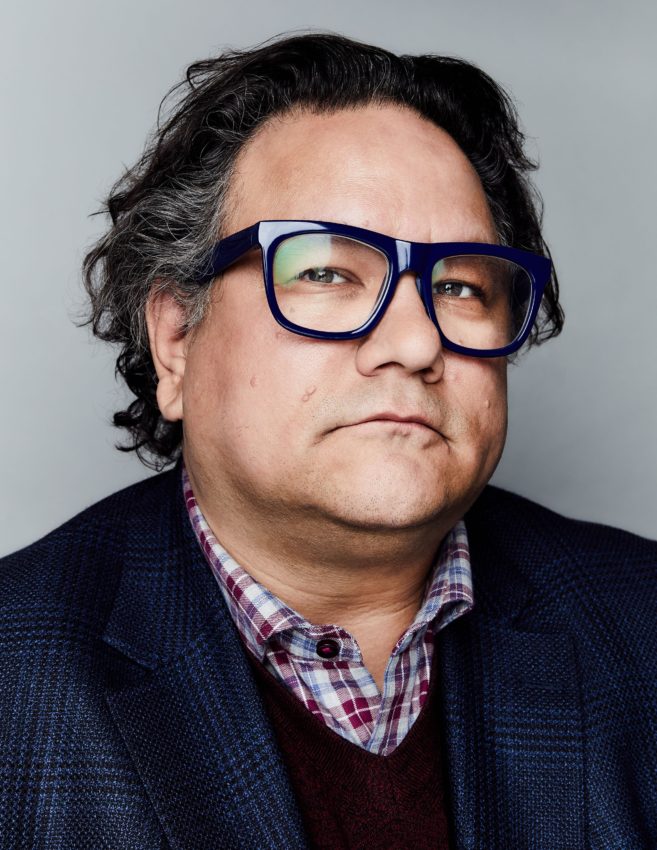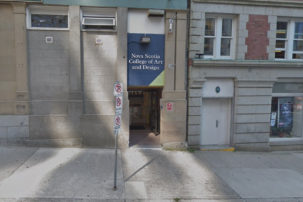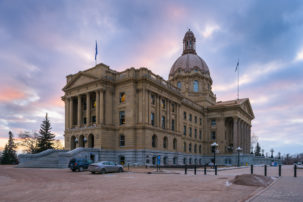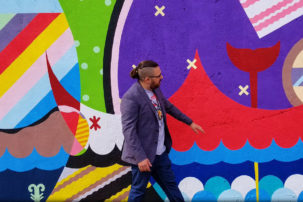In the past week, exhibitions have closed and artist talks and performances have been cancelled or postponed across the country—raising concerns around the fees that artists would have received. Public art galleries, museums and artist-run centres have faced questions about how these necessary facility closures and cancellations will affect their own funding, which often depends on public service provision.
Simon Brault, the director and CEO of the Canada Council for the Arts, Canada’s largest arts funder, has been trying to lead his agency’s response to these issues while working in self-isolation over the past 13 days from his apartment in Gatineau—including urging the federal government to consider the financial losses the cultural sector is experiencing due to COVID-19.
“The Canada Council is part of the machinery of the government,” Brault explains, “so I’m in daily contact with the government in order to give advice, and explain what the specific context of the cultural sector is—making sure that we are offering options in terms of the most urgent actions that should be done.”
“There’s certainly a lot of artists whose careers are suddenly on hold,” says one local funder, “especially musicians and actors and visual artists.”
The Canada Council’s frequently updated COVID-19 information page reassures many existing grant recipients that their payments are being processed as usual. It assures that projects already approved for funding, and that can be postponed until after the wider self-isolation period, will receive conditional grants. And it tells artists that certain project expenses can still be covered, though artists must document the impact of COVID-19 on their project in their final reports.
“We are communicating constantly to reassure people and to help people navigate this situation,” says Brault, “But also but we cannot pre-empt decisions that are very, very centralized now at the government level.”
To that point, Brault and the Canada Council urge artists and arts workers facing financial losses, layoffs and duress to apply for the improved access to Employment Insurance or new Emergency Response Benefit programs provided by the federal government. The latter program is meant to support workers not usually covered by EI.
“I think the role of the Canada Council is both to be, right now, a really good partner of the government…to explain and advocate for the how we apply the universal measures [the federal government is taking] to the cultural sector—and then [to offer] options about how we can prevent the collapse of the sector,” says Brault.
And Brault is also thinking about the fact that many arts organizations in Canada are non-profit rather than for-profit.
A Canadian Public Arts Funders network, which stretches from coast to coast, is trying to stay in dialogue about how to best address the COVID-19 impacts.
“We are in discussion to see what could be crafted that would help the not-for-profit sector, the same way the for-profit sector will be taken care of by extraordinary measures by the government,” Brault says. “We realize now it’s a very, very vulnerable sector—and maybe we need as a funder to think about…new approaches [once the crisis has stabilized] to make it more resilient for the future.”
Across the country, provincial and territorial arts councils are also in dialogue, with each other and with the Canada Council, about what measures to take.
“We have taken a similar stance to most arts funders in the country, which basically says that, if you’re an organization that needs operating support, none of this will be penalized: we won’t ask for money back,” says Michael Jones, CEO of the Saskatchewan Arts Board and chair of the Canadian Public Arts Funders network. “If you have received funding to do a project, we are being flexible—like let’s change your dates for that. If projects get cancelled, we are allowing people to keep [or claim] any expenses already incurred.”
Jones says a priority for him and many of his colleagues is to be responsive where they can, while also dealing with the procedural strictures that come with being a public agency handling public money. (Each province and territory can also have different jurisdictional approaches; so the Cultural Human Resources Council of Canada has recently started to aggregate COVID-19 resources regionally for reference, too. CARFAC National is also maintaining a varied resource list.)
“We are trying to be conscious of all the demands being placed on artists right now,” Jones says, “so we are also looking at small internal changes, like what can we do about grant deadlines. We are just trying to keep in mind the people working in this sector the best we can.”
Smaller organizations can often be more nimble with how they get needed funds into artists’ hands right now.
Other types of organizations can be more agile in shifting how they get funds to artists.
The Aboriginal Curatorial Collective / Collectif des commissaires autochtones (ACC-CCA), for instance, quickly changed gears from planning a national in-person conference to supporting artists through its new Curating Care program, which is accepting applications until March 27.
According to the Curating Care webpage, they are offering $100 honorariums to eligible participants, who must submit “a 2-minute video outlining who you are, what your practice is, and how you locate care throughout your practice.” The funds are available to eligible participants only on a first-come, first-served basis.
“It’s the kind of immediate thing that we realized we could do,” says Camille Georgeson-Usher, executive director of the ACC-CCA. While recently planning a national gathering for late spring, she thought, “Why are we trying to plan an event for the future when people can’t even go buy food?” So, working with ACC-CCA director of programming, Camille Larivée, and the rest of the organization, Curating Care was quickly created.
“What we started to hear right from the get-go is [artists] wanted to see the programs operate as normal, as much as possible,” says one regional funder. So they’ve tried to make that happen.
The ACC-CCA already had some funds mandated to create opportunities for Indigenous artists to present on the work they do. Curating Care shifted that online, and in micro-levels. “I think there’s a way that arts organizations can look at their programming and site it within a digital framework,” Georgeson-Usher says. Given the wider uncertainty around when galleries and museums will reopen, she notes, “I know we are really reconsidering the role of technology” in what ACC-CCA does.
Indeed, funding and presenting organizations that are already quite practiced in using online tools are not experiencing as many disruptions at the moment as others are.
“In the past two and a half years, we have moved most things online anyway,” says Reginald Winsor, executive director of ArtsNL—Newfoundland and Labrador Arts Council. “We have been doing meetings through teleconference,” and some peer assessments too—so most ArtsNL granting processes are proceeding as usual.
“What we started to hear right from the get-go is that [artists and arts organizations in the region] wanted to see the programs operate as normal, as much as possible,” says Winsor. “And that peer assessment meetings would happen and that results would be announced as they normally would be…. For now we’re proceeding as we normally would just in a bit of a different scenario with folks working from home.”
One thing to know in all this: funders, like artists, are dealing with a lot of uncertainty. More announcements are expected in the weeks to come.
Listening to artists is also something Elephant Artist Relief Society (EAR) in Calgary is doing. Initiated in 2007 to help local artists in crisis, EAR has, in recent weeks, “received more applications than usual,” says EAR board president Jill Armstrong. “There’s certainly a lot of artists whose careers are suddenly on hold,” Armstrong says, “especially musicians, actors and visual artists.”
Armstrong and the EAR team are also trying to be conscious of what new funding gaps they can fill in the weeks to come. “The reason EAR exists in the first place is because artists tend to fall through the cracks in many ways—in earning lower income than a lot of other demographics, and in having expenses that aren’t necessarily covered by insurance or EI,” Armstrong says. “We’re here to help people through a crisis, but we have to adapt to the situation” as EI and other support programs change.
For the time being, however, EAR assessment processes are proceeding according to a regular schedule—with the proviso that things continue to change “hour to hour” in terms of COVID-19 news and government response. It also continues to receive donations through Canada Helps from people who want to support artists in crisis, but don’t know exactly how. (100 per cent of the money donated flows to artists in need.)
One thing to know in all this: funders, like artists, are dealing with a lot of uncertainty. More announcements are expected in the coming weeks for various levels of the cultural sector (for instance, just as this article was going to press, the Toronto Arts Foundation announced an emergency COVID-19 response fund for artists in that city), but the nature of that support is still in development and must be part of a wider strategy—particularly at the national level.
“What we are facing right now is absolutely not specific to the cultural sector,” says Simon Brault of the Canada Council. “The entire economy of our country is in danger of collapsing. We have now four million unemployed people, and maybe there will be eight million for a certain amount of time.
“What the government is trying to do is look at health first and then the economy—so in a situation like that, what we can do for the arts sector is try to adapt as much as we can the general measures that are announced to make sure that they will apply in the right way to the art sector.”

 Photo: Bank of Canada.
Photo: Bank of Canada.







